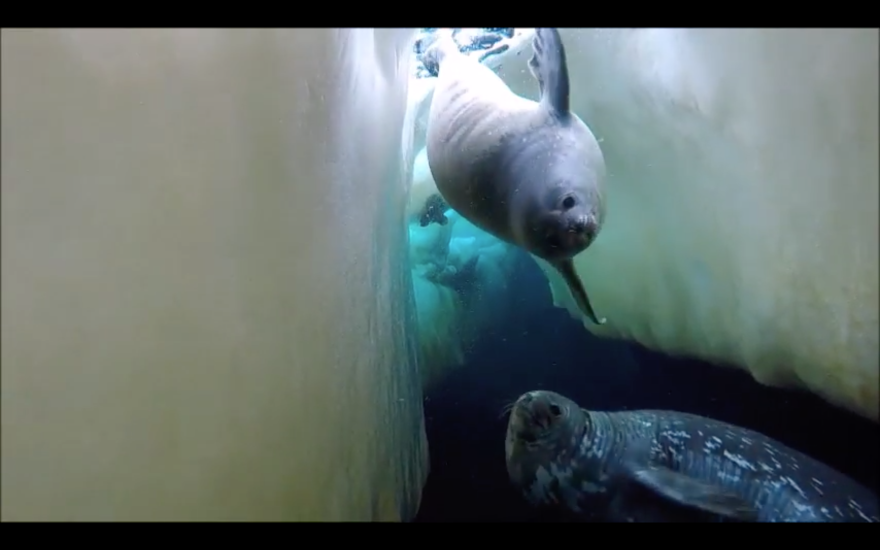The Weddell seal lives in Antarctica. It’s the southern-most breeding mammal in the world and can dive to depths of 2,000 feet, staying under the water for up to 90 minutes. A team of five Cal Poly graduate students and professors recently returned from a ten-week research trip in Antarctica, studying Weddell seal pups.
This was the first of two seasons the team will spend at McMurdo Station, the main American base in Antarctica, studying these animals in order to answer two main questions: how do Weddell seal pups stay warm and how do they develop their ability to dive?
Doctor Heather Liwanag is an assistant professor of biology at Cal Poly. She was one of the lead advisors for this research trip, and says her team was initially shocked that these topics hadn’t been covered in previous studies.
“There are questions that you think we’ve already answered and we haven’t. And that’s what drives a lot of really cool science, is saying, ‘How do we not know the answer to that yet? Someone should answer that!’ And sometimes that someone has to be you," Liwanag said.
The team was looking at the physiology of both harp and ringed seals when they realized Antarctic Weddell seals are missing brown fat, a key component that keeps the other seal species warm.

“It’s a tissue that is designed to generate heat. This tissue is super specialized. These arctic seals seemed to need this thing that generated extra heat for them," Liwanag said. "Weddell seals do not have brown fat. So we basically don’t know how they stay warm.”
This discovery is what kick-started the research, Liwanag said. And after several years of grant proposals and obtaining all of the necessary permits, the National Science Foundation gave $1 million to sponsor the research expedition.
Emma Weitzner is a Biological Sciences grad student at Cal Poly. She was one of the five researchers in Antarctica. She said, although there was a lot of work on the front end to get the trip going, it was well worth it.
“There was a lot of prep work. We had to order all of our supplies and pack our equipment to get shipped down and we had to go through a lot of rigorous medical checks. But this was my dream since I was a little kid so I was beyond thrilled,” Weitzner said.
The team collected all of the data they set out for, noting patterns and trends among the pups. Weitzner said a second season in the field is necessary to gather more data and get the complete picture as to how these seals are developing.
“Their capacity to hold their breath and stay underwater for a long time, was actually increasing with age," Weitzner said. "So we didn’t see a lot of deep diving attempts, but we did see their physiology kind of gearing up to help them dive deeper in the next weeks, months, of their development.”

Weitzner said studying the Weddell seals does not come without its challenges. Aside from the danger that comes with walking around on frozen ocean, a lot of little unexpected issues make research difficult. Duct tape doesn’t stick, pens are useless and at least once or twice a week, the team’s snowmobiles won’t start. All due to freezing temperatures.
“The support down there was so amazing and they worked so hard to get everything working for us so we could go out to our field sites,” Weitzner said.
At its maximum capacity, McMurdo Station accommodates 1,000 people. Functioning like a small town, the station houses everyone from mechanics and cooks to marine mammal researchers.
Dr. Liwanag said the team’s research on the Weddell Seal pups could help develop understanding of other seal species as well. If the team can find out how the Weddell pups keep themselves warm in the water, the answer could be applied to baby seals in the Arctic, who aren’t as accessible, and are being affected by climate change more rapidly.
The team will go back to Antarctica later this year to complete their research.



